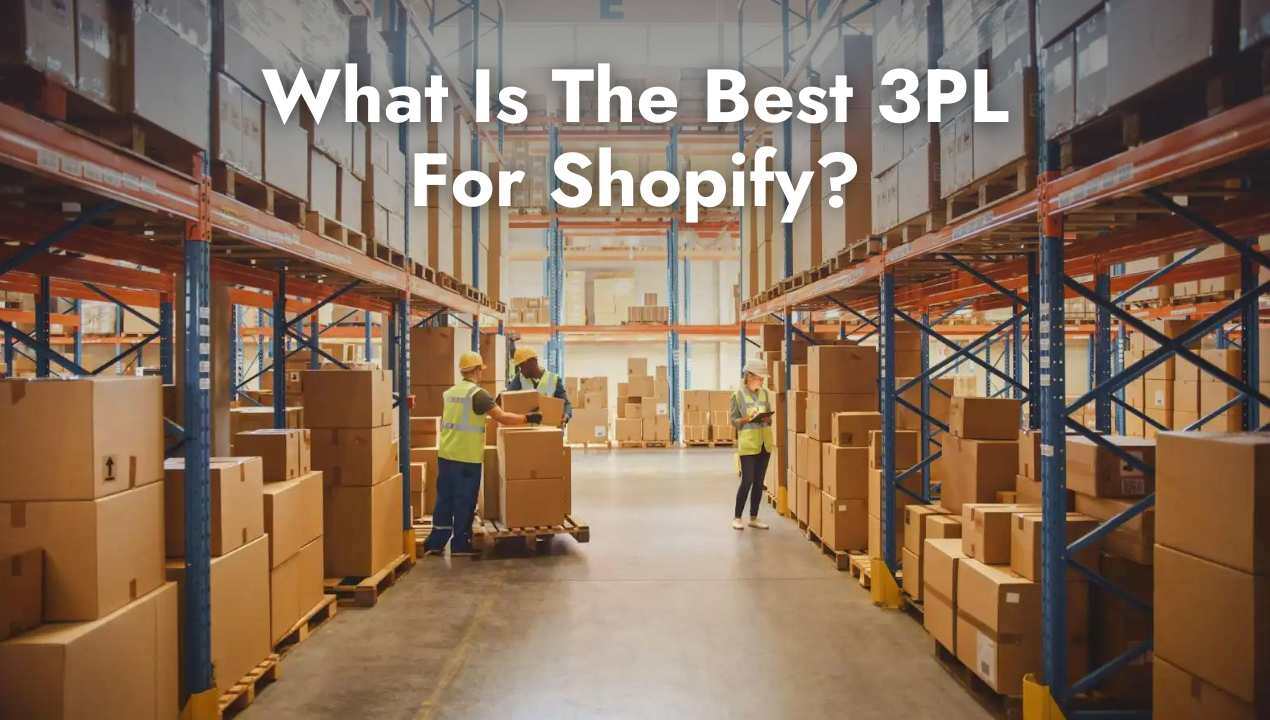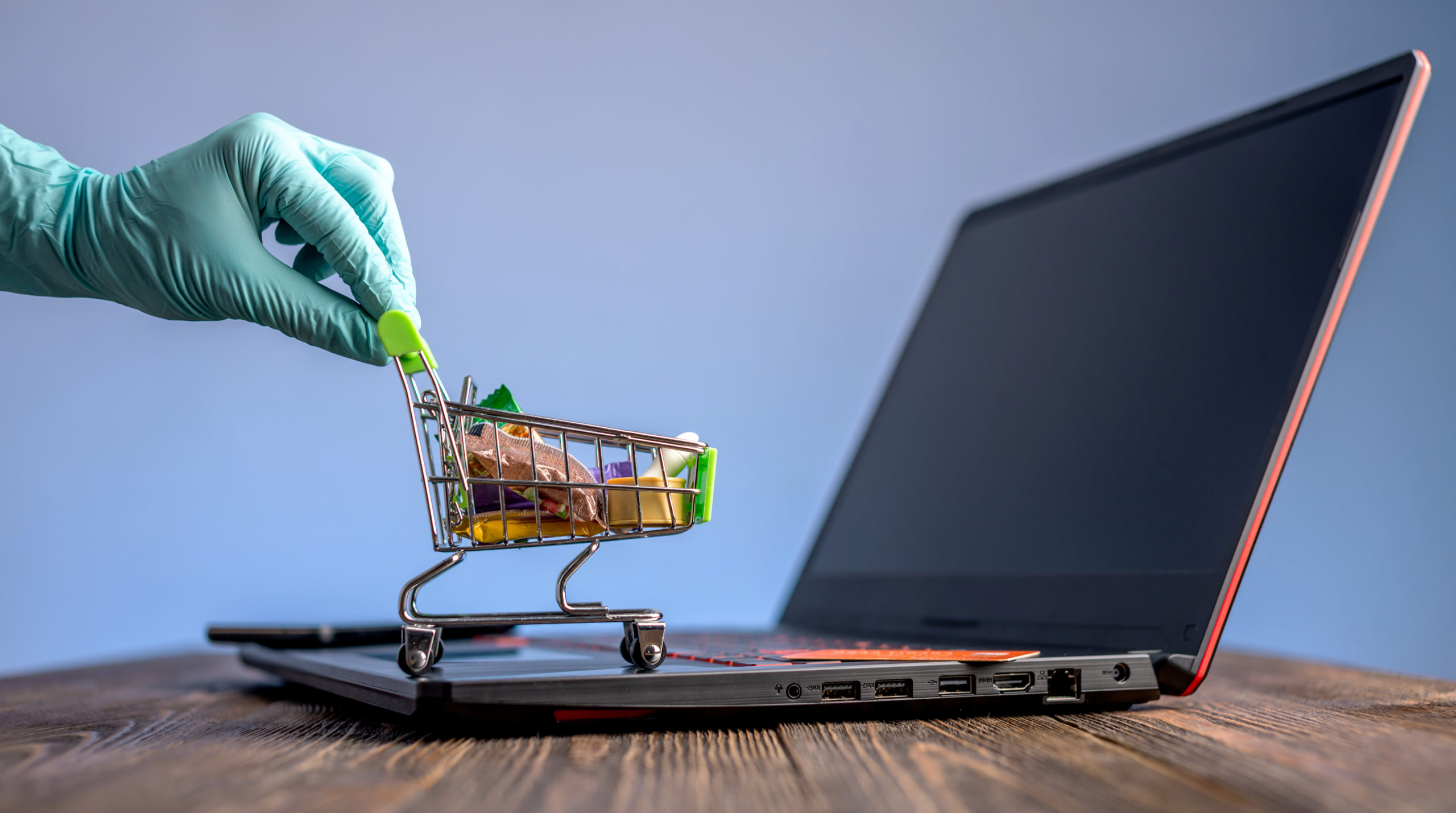Share this
Subscription Box Fulfillment: Shipping Strategy Guide
by Christie McLeod on Oct. 17, 2022

Subscription boxes are a huge hit – getting regular refills of your favorite products or getting to test new items without having to put in the research alleviates stress for the consumer. However, building those boxes can end up being a business of its own. But it doesn’t have to be a daunting task.
By outsourcing subscription fulfillment to a trusted partner, your brand can focus on growing its customer base rather than running a fulfillment operation – without sacrificing quality or speed.
Subscription service fulfillment isn’t new (remember the milkman?), but it has seen a healthy resurgence in recent years.
By the numbers:
- Recent research from McKinsey & Company indicates that 15 percent of Americans have signed up for one or more subscriptions to receive products on a recurring basis.
- A 2021 Jabil study found that subscription services are continuing to grow. A whopping 68 percent of people surveyed said they are using subscriptions for replenishment of household goods (think offerings like Amazon auto-replenish services or a HelloFresh box), and 79 percent said they are interested in using auto-replenish services.
- Data from West Monroe shows the average consumer spends $273 on subscription services each year.
- IMARC Group expects the subscription market to reach US$65 billion by 2027, exhibiting a compound annual growth rate of 18.3 percent over the next five years.
With those projections in mind, it might be time to explore options like outsourcing fulfillment to help your business grow sustainably.
Subscription Box Fulfillment
You’ve nailed down what you offer as a part of your subscription box and how often customers get their packages, now it’s time to pick and pack and ship to your subscribers. This can certainly feel overwhelming.
As your business grows, it may become less and less visible for you to manage order fulfillment on your own. Fortunately for you (and your employees/colleagues), there are solid partners out there that can help you streamline your order fulfillment process.
When looking into third-party logistics (3PL) companies for order fulfillment, here are some things you might want to consider:
How does this fit into my budget?
Cost for many people is the number one concern – and rightfully so. It’s important to make sure that a 3PL fulfillment center is going to be streamlining your labor while keeping costs low. Look for 3PLs that will offer a custom pricing option to best suit the needs and budget of your business.
You’ll also want to be prepared for some initial setup costs associated with hiring an ecommerce fulfillment center for your subscription-based business.
Fees for long-term storage are usually one of the main things to keep an eye out for. But, depending on how long it will take for your products to move from the fulfillment center to consumers, long-term storage might not be an issue.
It’s important to do your research and make sure that you are not just choosing a 3PL based solely on price but also on the ability to provide integrations with channels, offer a wide range of service levels, and, most importantly do they have a strong client support team and dedicated account manager.
Your best bet is to shop around and reach out to a few 3PLs to better understand what each company can offer; integrations with sales channels, service level options, and the support
for quotes to can get an idea of which one can provide the best deal on the fulfillment services you need.
Does this partner have several conveniently located warehouses/shipping centers?
Successful 3PLs run large fulfillment operations and have strong relationships with FedEx, DHL, UPS, and USPS, and work with additional local, national, and international carriers. This gives clients a couple of benefits: deep carrier relationships come with discounted shipping costs, and with multiple carrier partners, your subscription box fulfillment center can choose the best carrier for your specific product.
What software does this 3PL use, and how does it fit with your plug-in apps?
Making sure the subscription fulfillment software in question can be easily implemented into your existing tech infrastructure is key. Ideally, you want to choose a company that offers software with tons of features that make taking and filling orders and managing subscriptions easy for everyone involved. The right software should aid in the categorization of your products in stock, account for the measurement of your product, track inventory product history, cycle counting, and provide stock reports in real-time.
Inventory management software can also keep you apprised on inventory levels at each fulfillment center location, integrate with UPS, FedEx, USPS, DHL, and all other major couriers to quickly get shipments out the door, and can streamline the process if you need to transfer items from one facility to another. It should also monitor long-term trends to see key insights to help you determine if one location sells more of a certain product and ensure ecommerce fulfillment shipments arrive at their destinations on time. If a supply chain gets disrupted, you’ll hear about it first, so you can resolve the problem.
How will returns be handled?
On average, 30% of all the products purchased online are returned, so the last thing you want is to hire a fulfillment center that takes a hands-off approach to returns. A powerful ecommerce fulfillment service will have a program designed to make returns management just as simple as the subscription box fulfillment itself.
Some of the best fulfillment centers have software designed to process returns and identify serial returners, which may help your buyers feel more confident about their purchase and may help you avoid returns from them in the future.
What are the packaging options, and is branded packaging available?
The best way to make reinforcing your brand easy is by using a fulfillment service that can offer branded packaging. It adds an extra, clean, professional touch, and you can attract the right kind of attention to your ecommerce store. The average consumer wants boxes that are both appealing and adorned with the brands they are loyal to, so sending out your products in boring brown boxes can work against you.
On top of being attractive, it has to endure the elements, protect your products as they move from warehouse to transportation to the doorstep of the customer, and ideally be environmentally friendly.
The traditional cardboard box is ideal for most customer orders that need space and sturdiness: it’s cost-effective, available in many sizes, reliable, reusable, and recyclable. Remember, most fulfillment and shipping companies base pricing around box dimensions and weight; working with a fulfillment company will ensure warehouse workers select a box that is just the right size for your product. Where durability is a bigger concern, you can choose a double-walled box to help protect fragile items.
For an added layer of protection, you can stuff your box with packing peanuts, bubble wrap, craft paper, tissue and crinkle paper, air pillow bags, or plastic liner bags.
You can also opt for a soft pack for smaller items that may not need as much protection. Bubble envelopes come in a wide range of sizes to easily fit into mailboxes allowing the customers to receive the delivery to their door without a post office pick-up.
Another thing to keep in mind is that shipping dangerous goods comes with its own set of rules and regulations. There are different specifications required for different types of items, and each country has its own policies on hazardous materials (these goods can vary widely but include lithium batteries, battery-powered devices, aerosols, oxygen cylinders, and flammable materials). Your 3PL will understand shipping regulations and handle the process of preparing dangerous goods for shipment.
Are most fulfillment centers built for scale?
Finding a fulfillment partner that is set up for scale is a key concept – something that was specifically emphasized during the COVID-19 pandemic. This allows your ecommerce business to be in a better position to deliver the best customer service possible. It is important to sign up with a 3PL ecommerce fulfillment partner before getting too overwhelmed where you start under-delivering to customers, breaking your fulfillment promises, and damaging your overall brand.
Kitting
Subscription fulfillment requires a hefty amount of kitting and assembly, something some 3PLs will offer as a part of their fulfillment services. This can be an especially important process if your offerings are subscription boxes or something similar.
If you’ve opted to go with a fulfillment company, you would send your inventory to the shipper’s warehouse along with customer and subscription information. The 3PL will then begin kitting the products.
The kitting process sees warehouse employees collect products with different SKUs that are typically sold separately and package them together to create one SKU. Most commonly, kitting involves fulfilling ecommerce orders by pre-assembling individual items into kits that are ready to be shipped rather than picking and packing them individually. When an order comes through for one item, inventory software registers the rest of the items as part of the sale.
From a business standpoint, creating kits is a great way to have a ready-to-ship set once a customer has placed an order online. This process simplifies storage and saves space by allowing components to be stored together in a warehouse where they can easily and quickly be retrieved when an order is placed.
Bundling products like this can also help reduce costs and keep overhead low.
Don’t you hate when you order three things on Amazon at the same time, and they all arrive in different packages? Chances are your customers feel the same way. Proper kitting and assembly can improve the end user’s unboxing experience. Having everything you need delivered, all in one box – what a concept! A happy customer is more likely to be a repeat customer.
A well-designed 3PL company will also likely have a kitting tab in its inventory management software. These programs, like the one that Shipfusion uses, automatically update inventory data as orders enter the system, providing a real-time snapshot of your products across every sales channel and facility. Using this software helps keep your order fulfillment reporting and inventory forecasting data in one place and helps optimize your supply chain.
You also may want to add marketing materials during the kitting process, or you can add them during picking. If you want to send different offers based on a customer’s profile, you can give your marketing fliers SKUs and add the SKU for the relevant offer to the order pick list.
While kitting is quick, convenient, and cost-effective, it doesn’t always make sense for every business. Your third-party partner can help you navigate the options and decide what will work best for you.
How Shipfusion fits into your subscription box business model
Shipfusion’s subscription box fulfillment services provide fast, trackable shipping, simple inventory management, expert kitting, and strategically located warehouses to lower any clients’ bottom line. By outsourcing fulfillment to a trusted partner like Shipfusion, your brand can focus on growing its customer base rather than running a fulfillment operation – without sacrificing quality or speed.
Shipfusion offers customers tailored solutions based on their particular business model and offers sample services in order to meet the unique needs of subscription box companies.
We also help with several aspects of your subscription box fulfillment process:
Multiple Fulfillment Centers: Fulfillment should be simple, and we certainly aim to make it simple for you. Shipfusion’s full-service network lets you control your data with fast shipping and transparency for clients in the US and Canada. Our multiple fulfillment centers across North America allow for quick delivery and even temperature-controlled product storage.
Freight: Shipfusion automates the process of booking and managing freight by using Shipfusion’s algorithms to find the best carriers, routes, and rates from our network of logistics 3PL Fulfillment Partners. Our Live Pricing app is integrated directly into each carrier, allowing them to pass back accurate live pricing options to end customers at checkout.
Integrations: Shipfusion easily integrates with popular ecommerce apps – including Amazon, Shopify, Walmart, Magneto, WooComerce, and BigCommerce – and includes an intuitive, web-based app that lets you manage inventory and fulfillment on any device. The onboarding team ensures the accuracy of data for new customers with a complete analysis of SKUs and multiple tests run between Shipfusion and existing systems. After projects have been set up, clients can monitor the stages in real-time as well as receive notifications of when a given project is complete.
Shipping & Receiving: Fulfillment companies like Shipfusion will have relationships with many different major shipping carriers, therefore providing you with the best rates and next-day guaranteed shipping options. Fulfillment companies like Shipfusion will have cut-off times for orders to be placed, so be sure to mark those in your calendars.
Returns: On average, 30 percent of all the products purchased online are returned. The last thing you want is to hire an ecommerce fulfillment center that takes a hands-off approach to returns. Shipfusion’s custom returns portal easily generates shipping labels and knows exactly when merchandise is returned, and receives confirmation that quality control checks were done upon arrival.
Inventory Management: Integration doesn’t get much easier than this. Shipfusion will set up everything you need to control and maintain inventory and shipments. Shipfusion’s inventory management software automatically updates inventory data as orders enter the system, providing a real-time snapshot of your products across every sales channel and facility location.
Shipfusion’s subscription box fulfillment services provide fast, trackable shipping, simple inventory management, expert kitting, and strategically located warehouses to lower any clients’ bottom line. By outsourcing fulfillment to a trusted partner like Shipfusion, your brand can focus on growing its customer base rather than running a fulfillment operation – without sacrificing quality or speed.
Share this
You May Also Like
These Related Articles

A Brief Guide to Ecommerce Shipping

What Is The Best 3PL For Shopify?

Finding The Right 3PL Ecommerce Fulfillment Partner
- April 2025 (18)
- March 2025 (26)
- February 2025 (26)
- January 2025 (37)
- December 2024 (16)
- November 2024 (23)
- October 2024 (22)
- September 2024 (27)
- August 2024 (9)
- July 2024 (8)
- June 2024 (5)
- May 2024 (8)
- April 2024 (8)
- March 2024 (6)
- February 2024 (6)
- January 2024 (5)
- December 2023 (3)
- November 2023 (3)
- October 2023 (5)
- September 2023 (4)
- August 2023 (2)
- July 2023 (1)
- June 2023 (4)
- March 2023 (2)
- October 2022 (1)
- September 2022 (5)
- August 2022 (4)
- July 2022 (7)
- June 2022 (4)
- May 2022 (4)
- April 2022 (6)
- March 2022 (2)
- February 2022 (1)
- January 2022 (3)
- December 2021 (2)
- November 2021 (4)
- October 2021 (2)
- September 2021 (5)
- August 2021 (4)
- July 2021 (4)
- June 2021 (3)
- May 2021 (2)
- April 2021 (3)
- March 2021 (3)
- February 2021 (3)
- January 2021 (2)
- December 2020 (4)
- November 2020 (2)
- October 2020 (4)
- September 2020 (2)
- July 2020 (5)
- June 2020 (4)
- May 2020 (2)
- April 2020 (2)
- March 2020 (4)
- February 2020 (1)
- December 2019 (1)
- May 2018 (1)
- March 2018 (2)
- February 2018 (3)
- January 2018 (3)
- November 2017 (3)
- July 2017 (4)
- March 2017 (3)
- February 2017 (5)
- January 2017 (3)
- December 2016 (4)
- November 2016 (6)
- October 2016 (6)
- October 2015 (1)
- September 2015 (1)
- June 2015 (3)
- May 2015 (3)
- August 2014 (1)
- July 2014 (1)
- March 2014 (1)
- February 2014 (1)